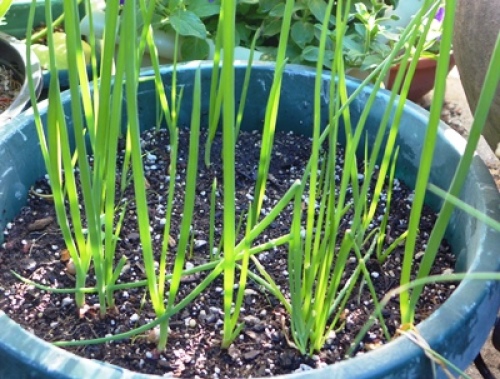Three Ways to Plant Container Onions
These bulbs are popular because they store well and are an important ingredient for any savory recipe

People have been growing onions for thousands of years, and there are at least two key reasons: They store well, and they’re an important ingredient for any savory recipe.
Before you start your onion growing, select the onion varieties that match the daylight hours in your garden. Onions can be short-day, intermediate-day, or long-day.
- Short-day onions do best in warmer, southern parts of the country where there are 10 to 12 hours of daylight in the summer.
- Intermediate-day varieties (also called day-neutral) grow well throughout the middle of the country, where they need 12 to 14 hours of daylight to form bulbs.
- Long-day onions grow best in the northern part of the country, where they need 14 to 16 hours of daylight to start forming bulbs.
There are three ways you can plant onions in your garden: seeds, onion sets, or onion transplants.
Many gardeners prefer to plant either onion sets (small bulbs) or transplants. (If you live in a region with a long and warm growing season, however, you can plant seeds directly in the garden.) In areas with colder and shorter seasons, start onion seeds indoors about 8 to 10 weeks before you want to transplant them outside.
In addition to matching the onion variety to the daylight hours, be sure to plant onions in locations with full sun, rich well-drained soil, water, and room for them to grow into bulbs.
If you’re starting your onions indoors, prepare a large container with potting soil and dig in a slow-release fertilizer to help roots get a good start. Wait to transplant onions until the soil temperature reaches about 60°F.
Plant onion sets and transplants about 2 to 3 inches deep and 1 to 2 inches apart. If you are planting in rows, allow at least 12 inches between rows.
After plants start to grow, add an organic mulch, such as straw or dried leaves, to help the soil retain moisture and so that you can avoid weeding around the delicate, shallow roots. Water at the soil level with a hose and nozzle, drip irrigation, or a soaker hose to keep soil consistently moist (not soggy). Don’t use any overhead watering because leaves need to be kept dry to prevent fungal problems.
To avoid insect pest problems, use floating row cover cloth to protect plants.
Because the size of mature onions depends on the number of healthy green leaves, work to grow as many healthy leaves as possible. Onion plants need fertilizing through the season. A water-soluble plant food makes it easy to fertilize with a watering can, or you can carefully dig in fertilizer between plants and then water.
As soon as onion tops start to fall over, stop watering. Without water, the onions bulbs will start to harden, which is important for long-term onion storage. Lift onions from the soil carefully after the tops have fallen but before the leaves have a chance to dry completely. Cure the onions in the garden by letting the leaves of one row cover the bulbs in another for 7 to 14 days.
If the weather is rainy and wet, cure onions under cover. Allow air to circulate around the bulbs so they can dry completely.
After the tops are completely dry, cut them off about an inch above the bulb. Gently brush off any soil, and store the bulbs on a flat surface, spread apart in a cool dry place.






Comments
Log in or create an account to post a comment.
Sign up Log in